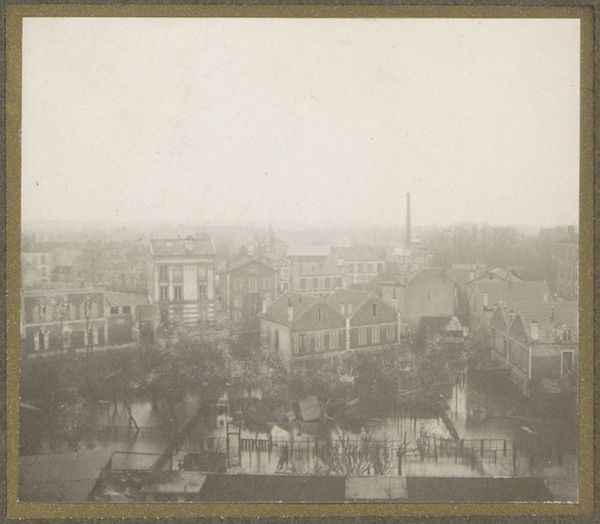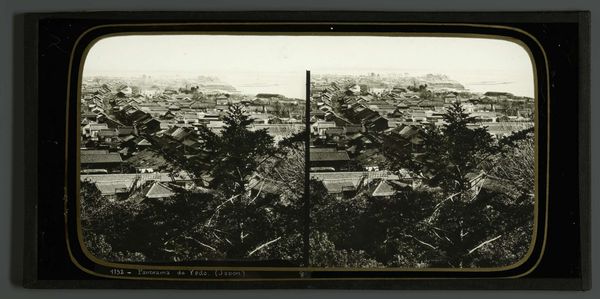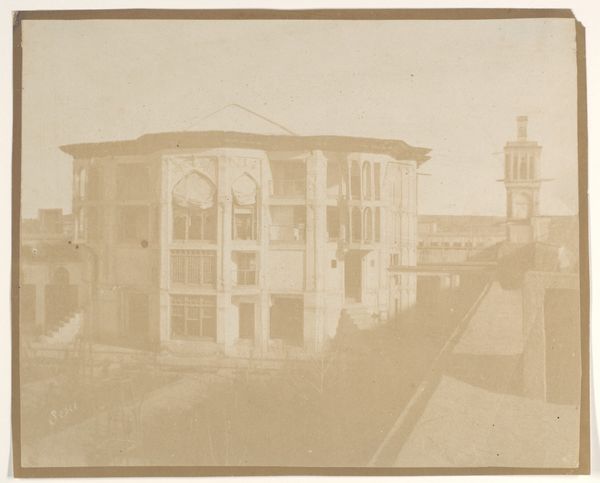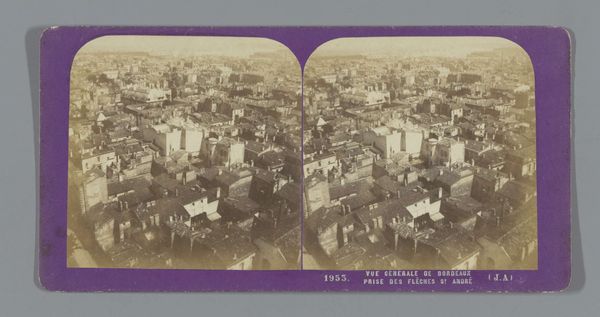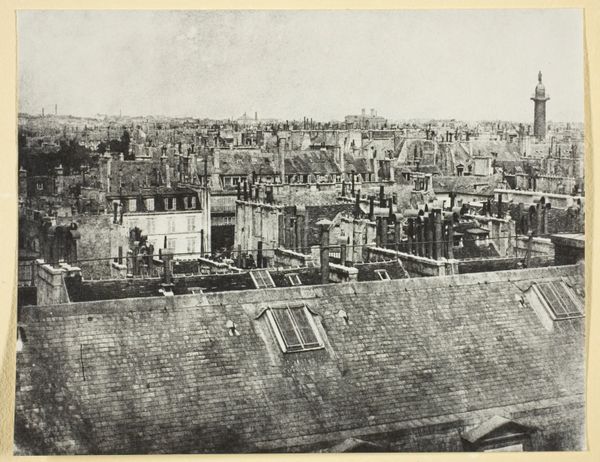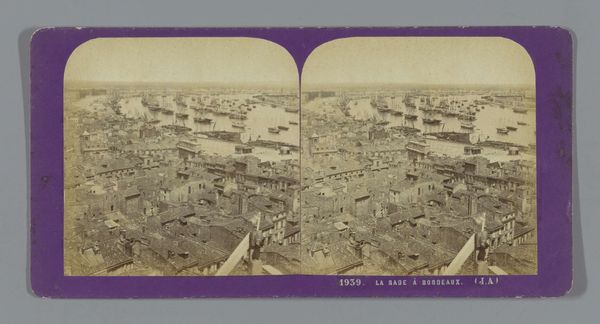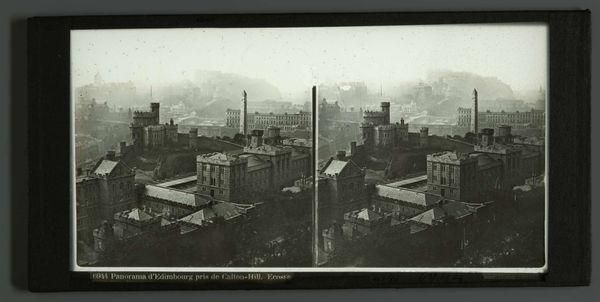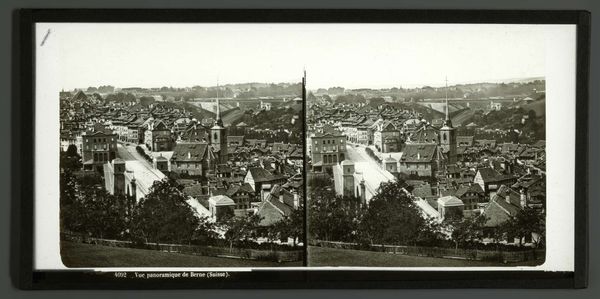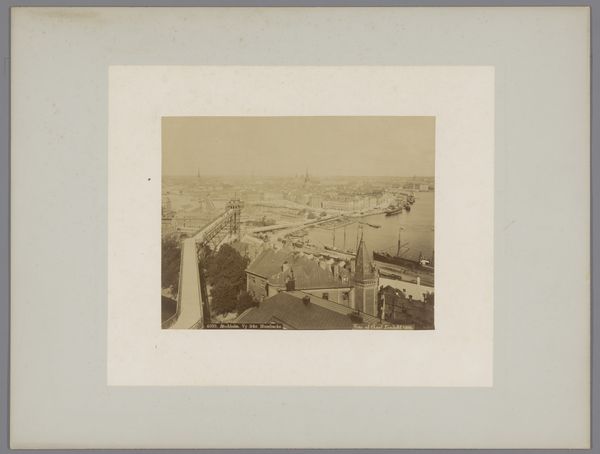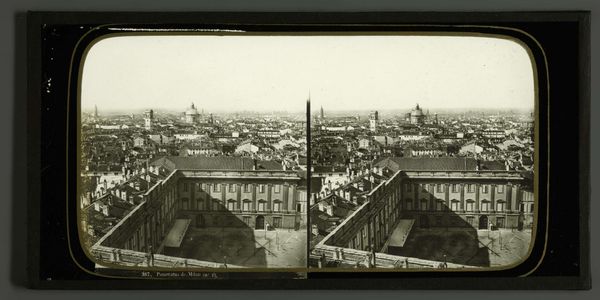
Onthulling van `Naatje op de Dam' (het Monument ter herinnering aan de Volksgeest van 1830-1831) in Amsterdam op 27 augustus 1856 Possibly 1856 - 1858
0:00
0:00
Dimensions: height 84 mm, width 172 mm
Copyright: Rijks Museum: Open Domain
Curator: Looking at this print, what strikes you first? Editor: The atmosphere. There’s something very austere, but triumphant, in how the image renders the architecture. Curator: This is "Onthulling van 'Naatje op de Dam' (het Monument ter herinnering aan de Volksgeest van 1830-1831) in Amsterdam op 27 augustus 1856," likely created between 1856 and 1858 by Pieter Oosterhuis. It depicts the unveiling of a monument. Let's dive into its layers. Editor: Absolutely. The Neoclassical architecture, it appears almost stage-like, deliberately designed to evoke power. Are there symbolic links in the piece that we can explore, like hidden clues in the tapestry of city life that speak to broader, psychological ideas. Curator: Given the monument commemorates the "Volksgeest," the spirit of the people during 1830-1831, the surrounding crowd suggests a celebration of national identity. What does it mean to have this visual celebration reproduced photographically at this time? Photography, while romanticized and often visually pleasing, becomes a vehicle for mass consumption. It memorializes the cultural ideas we wish to carry on with us. Editor: And think about it, an image celebrating Dutch resilience – a statement, and, crucially, one recorded using a modern technology. This event immortalized via Oosterhuis’s photographic print seems to capture that moment perfectly. Curator: Exactly! It’s fascinating how this image encapsulates the Romantic sensibilities of the period with its grand scale while also capturing the social dynamics of mid-19th century Amsterdam, but I feel like we could still view that collective spirit from a wider lens. Were those values fully accessible to people of marginalized races, genders, or classes? How does an artifact of national celebration exclude in plain sight? Editor: Good questions! And the fact that the medium is photography, rather than painting, makes this perhaps a precursor of modern propaganda. Something that has a feeling of a primary document. Curator: In its way, this image presents the continuities of the national narrative. It makes you think about how public monuments and the photographic recording of these public moments can build on the narratives of nationhood. Editor: It really does. An instance captured and disseminated. What a poignant visual fragment of history!
Comments
No comments
Be the first to comment and join the conversation on the ultimate creative platform.

